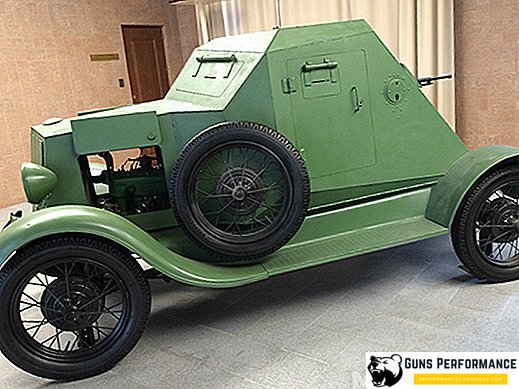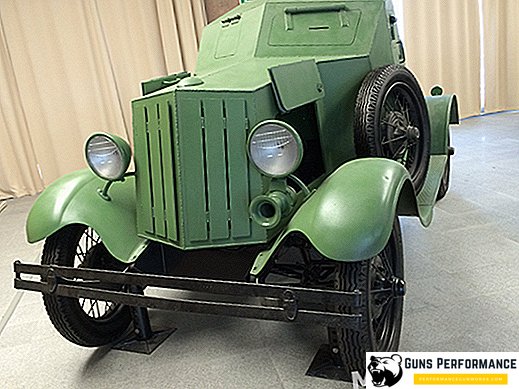
Soviet armored car D-8 of 1931 is the first domestic car of this type, created by Soviet designers on the wheelbase of the domestic car GAZ-A. The armored car was created as a reconnaissance vehicle and machine control in accordance with the needs of the army units of the Red Army.
Creation of armored car and serial production of the machine
The first Soviet armored car D-8 was designed by designer N.I. Dyrenkov, who used for his brainchild the technical base of the Soviet passenger car GAZ-A. The development of the project was carried out at an accelerated pace, and in 1931 the first prototype was presented to the high ranks of the Soviet military leadership. After field testing, the car was found to be suitable for adoption. It was decided to organize mass production at the Izhora plant in Leningrad.
Armored cars D-8 of the first modification were released in the amount of 28 pieces, followed by the modernization of the machine. In total for the period 1931-32, 60 armored vehicles were produced, differing by the established armament.

Technical and tactical characteristics of the 1931 D-8 armored car
- Combat weight: 1.6 tons.
- Crew - 2 people.
- Overall dimensions: length 3500 mm, width 1700 mm, height 1600 mm, ground clearance - 224 mm.
- Armament: two 7.62-mm machine gun DT (ammunition - 2079 rounds).
- Armor thickness: 3-7 mm.
- Engine: Ford. Type - 4-cylinder carburetor, power - 40 hp
- Maximum travel speed: 85 km / h.
- Cruising on the highway: 225 km.
- Overcoming obstacles: wall - 0.15 m, ditch - 0.7 m.
Armored car D-8, entered the army, was used during the entire pre-war period. The main task of using a combat vehicle was reconnaissance, outposts and as a connected vehicle. The D-8 and D-12 cars that remained in the army units took part in border battles during the initial period of the Great Patriotic War.
A photo













